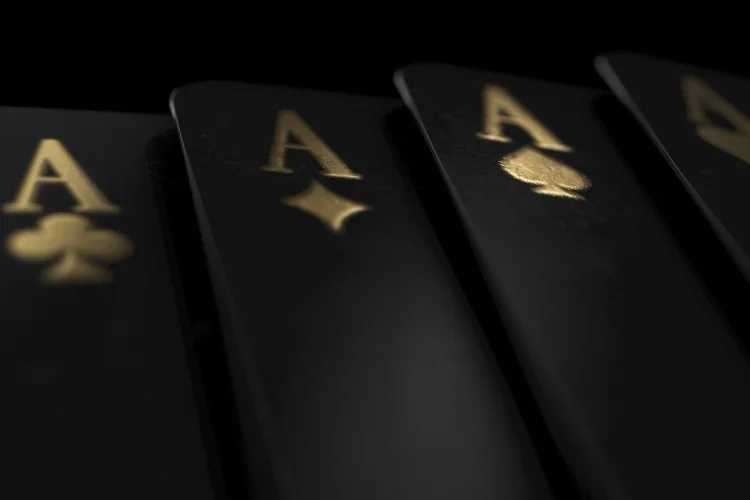by Zella
The marriage of art and technology has reshaped the canvas of creativity, birthing a realm where imagination meets innovation. As we've transitioned from the dominance of Windows PCs to the ubiquity of mobile technology, the art world has been continually evolving, opening up vast horizons of possibilities. Before you get into the details, make sure to check out the best online casino Ireland and hope you get lucky.

Contents
The Windows PC era heralded the introduction of groundbreaking software like Adobe Illustrator, Autodesk SketchBook, and GIMP. These tools provided a myriad of functionalities, from intricate vector designs to digital painting, reshaping the artist's toolkit.
Websites like Behance and ArtStation provided platforms for artists to host portfolios, attracting clients, recruiters, and fellow artists. They replaced traditional galleries, democratizing the art world by making it more accessible.
From powerful tablets like Apple's iPad Pro to Samsung's Galaxy Tab, artists got a diverse range of tools at varying price points, making digital art accessible to both hobbyists and professionals.
The introduction of pressure-sensitive styluses, like the Apple Pencil or the S-Pen, brought a tactile feel to digital drawing, closely mimicking traditional tools like brushes and charcoal.
Websites such as Redbubble and Society6 allowed artists to monetize their works without heavy investment. From posters to apparel, artists could sell a range of products featuring their designs.
Crowdfunding platforms, such as Kickstarter and Indiegogo, have been instrumental in helping artists fund ambitious projects, be it art books, exhibitions, or innovative products.
AR apps, such as ARtivive, brought a new dimension to static artworks. Paintings could come to life, sculptures could tell stories, and installations could interact with the viewer, providing an immersive experience.
3D modeling software gave sculptors the ability to visualize intricate designs before actual production. Combined with 3D printing, artists could now bring complex creations to life with impeccable precision.
The transition from traditional to digital mediums was challenging for many artists. However, online platforms like Skillshare and Udemy offered courses to bridge this gap, helping artists master digital tools.
With the ease of copying and distributing digital content, piracy became a concern. Digital Rights Management (DRM) tools and copyright registration platforms stepped in to ensure artists' rights remained protected.
Virtual Reality (VR) provided a unique platform for artists to showcase their work. Virtual galleries, where users could walk through and experience art in a 3D space, became popular, especially during global lockdowns.
With the boom in the gaming industry, artists found lucrative opportunities in game design, character modeling, and environment creation. The aesthetic appeal became as crucial as gameplay in attracting gamers.
As holographic technology advances, we can anticipate art installations that float in mid-air, bringing a surreal experience to viewers.
Artificial Intelligence, with tools like DeepArt and DeepDream, has already begun making waves in the art world. The collaboration between AI and human artists promises intriguing prospects for the future.
Cloud platforms have revolutionized the way artists collaborate. Tools like Google's "Jamboard" or Adobe's collaborative features in Creative Cloud have enabled artists to work on shared canvases, breaking geographical barriers and enhancing collective creativity.
With cloud storage solutions such as Dropbox or OneDrive, artists can now securely store their work and access it from any device, anywhere, ensuring they can work seamlessly without the fear of data loss.
As environmental concerns mount, manufacturers are focusing on producing devices with eco-friendly materials and reduced energy consumption. The sustainable tech movement is ensuring that artists can practice their craft without compromising the environment.
The shift towards digital art production has significantly reduced waste from traditional art materials. While both forms of artistry have their place, digital mediums offer an environmentally conscious alternative for modern creators.
Platforms like Instagram, TikTok, and Twitter have birthed viral art challenges and movements, providing artists with a global audience and instant feedback, an opportunity that was hard to come by in previous decades.
Artists with substantial social media followings are often approached for brand collaborations, merging the worlds of commerce and art. This not only provides financial opportunities for artists but also introduces art to a broader audience.
Softwares are now being designed to mimic traditional art techniques, from watercolor effects to the texture of oil paint, ensuring artists don't lose touch with classic art forms even in the digital realm.
Many artists are now incorporating digital components into their physical artworks or vice versa, creating a blend that offers viewers a rich, multi-dimensional experience.
Digital platforms offer unique avenues for art therapy. Virtual reality, for instance, is being used to create immersive therapeutic environments, and digital drawing tools are used in therapeutic settings to help individuals express and process emotions.
The act of creating digital art, with its endless possibilities and undo buttons, allows artists to experiment without the fear of making mistakes. This promotes mindfulness, as artists immerse themselves fully in the creative process.
Emerging e-learning platforms, powered by AI, now offer personalized courses tailored to an individual's skill level and learning pace. This means budding digital artists can find courses that adapt to their unique needs, ensuring they grasp concepts thoroughly before advancing.
The integration of AI in art platforms offers immediate feedback on one's artwork, pointing out areas of improvement. This on-the-spot critique, much like a personal tutor, aids in refining skills efficiently and effectively.

About Zella
Zella is a writer and filmmaker known for her work in the field of media arts. She hails from Tohatchi, New Mexico, and has achieved notable accomplishments throughout her career. Zella holds a bachelor's degree in Media Arts from the University of New Mexico and an MFA (Master of Fine Arts) in Creative Writing from the Institute of American Indian Arts.
 |
 |
 |
 |
Best Topics of the Day
Time for FREE Giveaways, and Free Gifts luck now
Reveal all secrets with adblock move. Hit a button below to show all
 |
 |
 |
 |